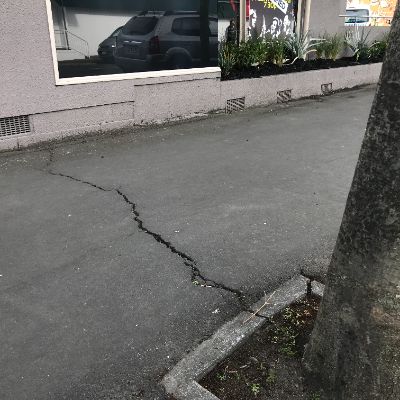Programme Confirmed To Better Manage Trees Causing Damage
In response to growing public requests, Hastings District Council has amended its tree management programme to set out a course of action over the next 10 years to gradually remove trees that are causing damage to private properties and council assets.

Council operations and monitoring committee chair Geraldine Travers said that about 20 years ago efforts were made to enhance Hastings streetscapes through planting trees in streets and parks.
“Because of our fantastic growing climate these trees flourished and are greatly loved by the Hastings community.
“While we recognise their importance, and the place they hold in people’s hearts, in some cases these trees have grown too big, or are in the wrong places, and are now causing damage on private properties and to council infrastructure.
“We need to have a considered plan to enable them to be removed before they cause more damage, create increased safety risks or become very costly to rectify the problems they are causing.”
Council has about 25,000 trees across the district and undertakes a significant ongoing annual tree-planting programme.
The current tree removal policy seeks to protect healthy trees and to maintain them or mitigate their damaging effects, rather than completely removing them.
Typically 50 to 100 trees are removed each year due to them being dead, dying, dangerous, or having a major impact on essential services.
Ratepayer complaints about otherwise healthy trees however, are increasing – ranging from concerns about safety to shading, leaf and litter drop, and damage to public and private property such as footpaths, fences and driveways.
Many of these issues have arisen due to inappropriate trees being planted in unsuitable locations planted, particularly in urban streets. This results in problems such as aggressive root growth damaging footpaths, walls and fences, or maintenance issues for adjacent residents including blockages in gutters and drains.
In addition, some streets have been over planted and they create multiple issues for street cleaning and neighbouring properties. In some cases they are only five metres apart, requiring them to be thinned.
Today, the operations and monitoring committee adopted a proposal to gradually remove about 450 trees identified to be causing problems in streets and parks over the next ten years, averaging about 45 a year.
They will be replaced with more suitable plantings, which form part of a wider regeneration programme to increase appropriate tree stocks across the district for improved sustainability and environmental outcomes.


 Gordon Campbell: On Justin Trudeau’s Demise, In A Global Context
Gordon Campbell: On Justin Trudeau’s Demise, In A Global Context Justice Committee: Justice Committee Reopens Submissions For Principles Of The Treaty Of Waitangi Bill To Tuesday 14 January
Justice Committee: Justice Committee Reopens Submissions For Principles Of The Treaty Of Waitangi Bill To Tuesday 14 January NZCAST: Survivors Of Abuse In Care Left Waiting - Urgent Action Needed Following Apology
NZCAST: Survivors Of Abuse In Care Left Waiting - Urgent Action Needed Following Apology Ōnuku Rūnanga: No One Wants Wastewater In Akaroa Harbour
Ōnuku Rūnanga: No One Wants Wastewater In Akaroa Harbour NZ Police: Funeral For Senior Sergeant Lyn Fleming Confirmed
NZ Police: Funeral For Senior Sergeant Lyn Fleming Confirmed NZ Police: Making Waves On The World Stage
NZ Police: Making Waves On The World Stage ACT New Zealand: Too Many Kiwis Denied The Chance To Gather With Loved Ones At The End Of Life
ACT New Zealand: Too Many Kiwis Denied The Chance To Gather With Loved Ones At The End Of Life


